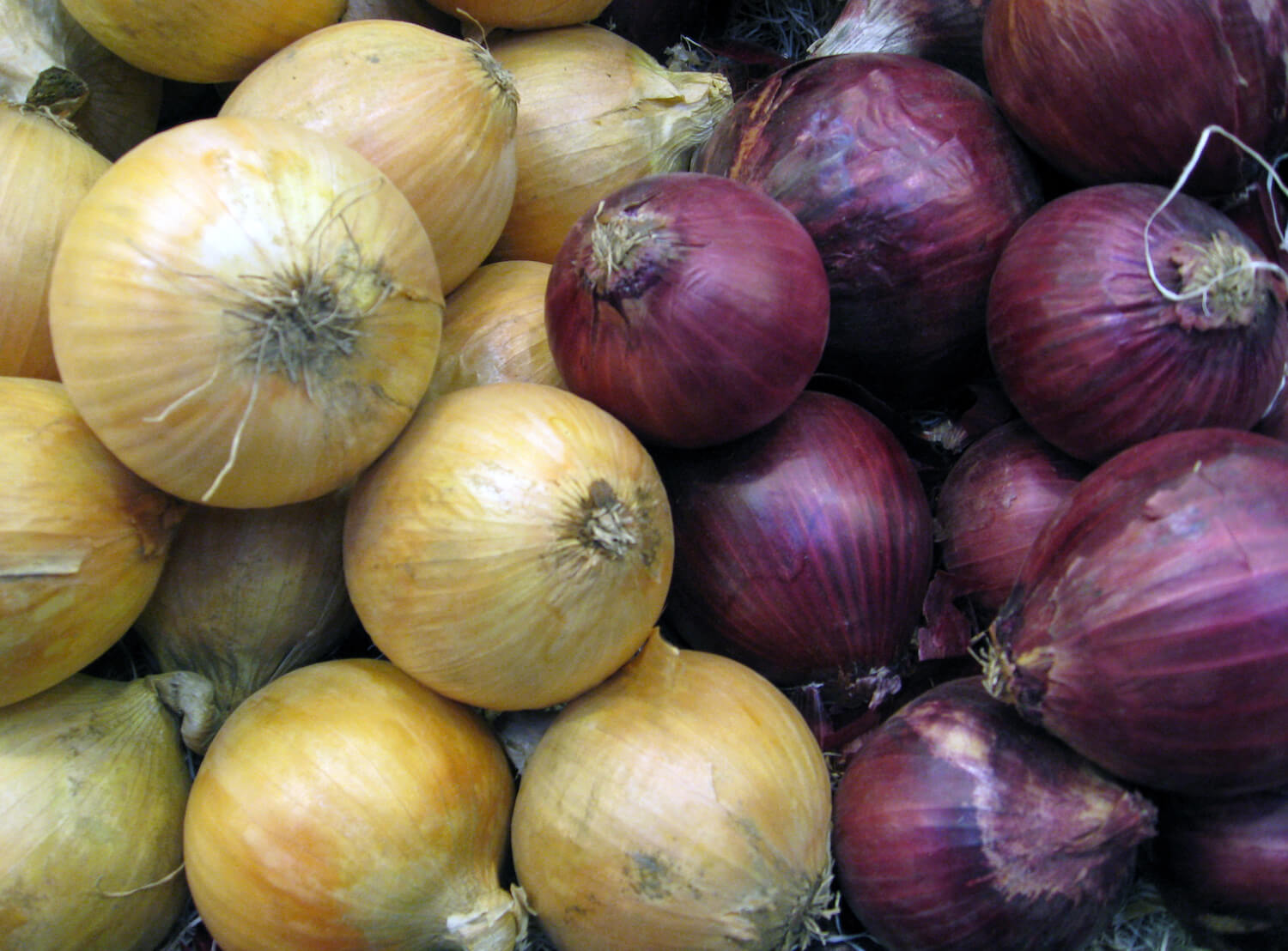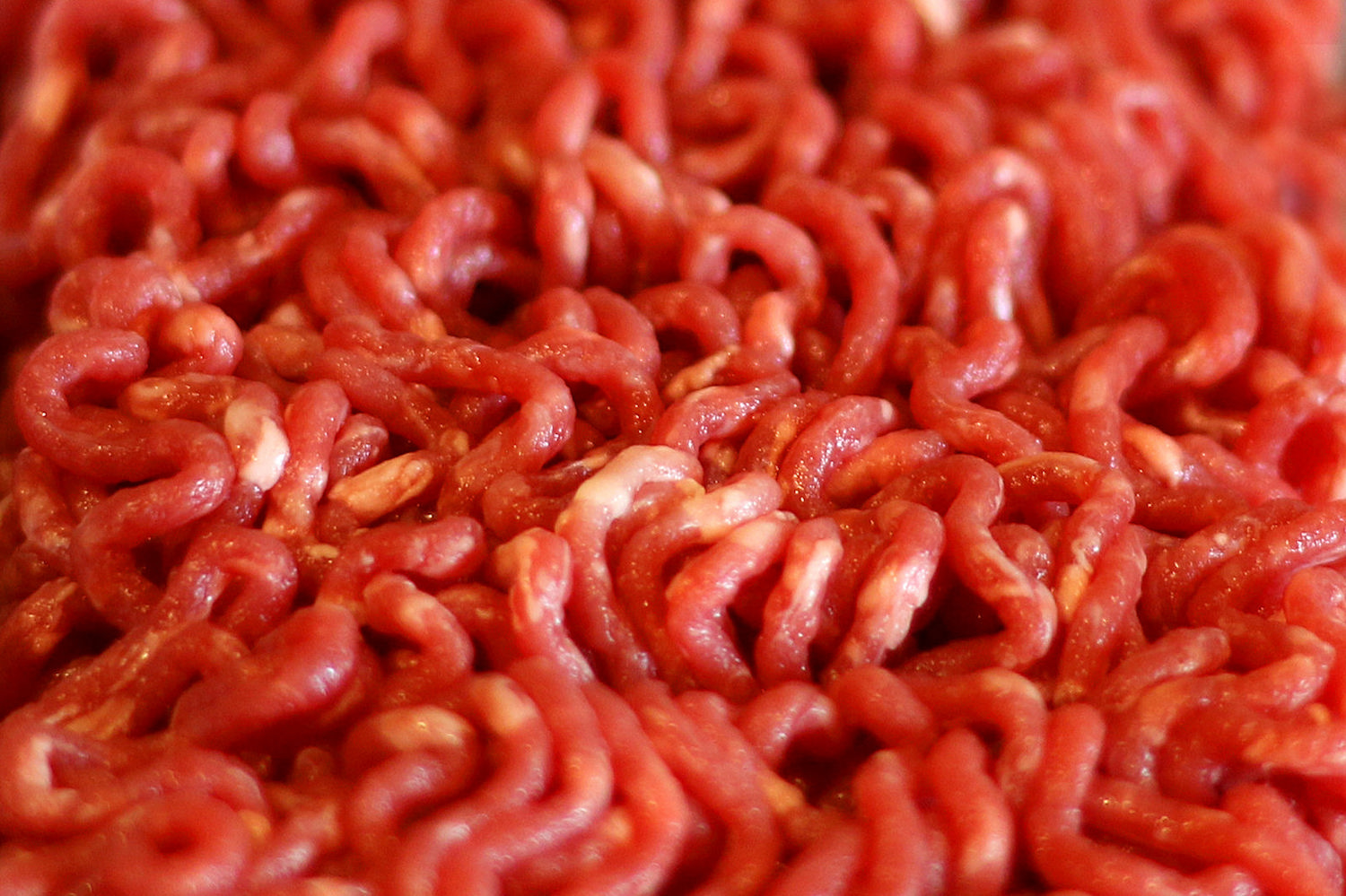
Flickr / Ruth Hartnup
The recall includes red, yellow, and white onions marketed under several different brand names.
An outbreak of Salmonella Newport linked to onions has sickened more than 500 people in the U.S. and Canada since early July. As of Tuesday evening, 59 people had been hospitalized and cases had been confirmed in 34 states, according to the Centers for Disease Control and Prevention (CDC). No one has died.
“It’s a weird one,” said Don Schaffner, professor of food science at Rutgers University. Canadian officials first identified a link to red onions after the CDC and its Canadian counterpart both flagged Salmonella outbreaks. Neither the Food and Drug Administration (FDA) nor the CDC have disclosed whether the cases appear mostly linked to restaurant food or home-cooked meals, further clouding the picture.
Recall efforts will extend far beyond the removal of whole onions from supermarket shelves.
Despite the knowledge gaps, this is already one of the largest Salmonella outbreaks in the past decade. The Peanut Corporation of America peanut butter outbreak of 2009 sickened 714 and killed as many as nine; in 2013, an outbreak linked to California chicken producer Foster Farms was linked to 634 illnesses.
Schaffner notes that the high number of cases in this outbreak may be due in part to better testing, but, he added, “honestly, no matter how you slice it, it’s a big outbreak.” And it comes just as the CDC and local health departments are under immense pressure to respond to Covid-19.
[Subscribe to our 2x-weekly newsletter and never miss a story.]
The current outbreak has been linked to Thomson International, Inc., a “grower/packer/shipper/supplier” based in Bakersfield, California. Red onions are implicated in the illnesses; the company has also recalled yellow, white, and sweet onions because of concerns about the potential for cross-contamination. A San Diego man sickened in the outbreak has already filed a lawsuit against Thomson International, Food Safety News reports, claiming breach of warranty and negligence.
The onions were sold to wholesalers, retailers, and restaurants in Canada and the U.S. under several brand names, including the Food Lion and Kroger labels. Consumers are advised to throw away onions marketed under the brands listed on the FDA website. If it’s not clear whether onions come from one of these brands, the agency advises they be thrown out. Symptoms of a Salmonella infection include diarrhea, fever, and cramps, while more severe illnesses can involve aches, a rash, and lethargy.
Recall efforts will extend far beyond the removal of whole onions from supermarket shelves. Much of the potentially contaminated product was likely used in prepared foods, meaning restaurants and retailers will have to examine their sourcing and identify everything that might have contained onions from Thomson International. An automated phone call to a Counter staff member on Tuesday from a Stop & Shop in Hyde Park, New York, warned that contaminated products might include store-brand diced red onions, store-brand stir-fry blend, and other products marketed under the Stop & Shop label.
The pandemic may have already hampered outbreak tracing efforts.
While onions’ ubiquity certainly complicates the recall, it may also have had an impact on the outbreak investigation process. “Part of what maybe made [the outbreak] slow to diagnose is the complexity of the epidemiology,” Schaffner said. “We saw this once before, with Salmonella St. Paul, where the epidemiologist said ‘oh, it’s tomatoes,’ and it turns out it wasn’t tomatoes, it was peppers—but because tomatoes and peppers and cilantro and onions are all ingredients used in salsa, the link was Mexican restaurants.”
Salmonella can survive on dry foods, Schaffner notes, without multiplying very much. But once the onions are cut, exposing their flesh to the bacteria, it can start to multiply rapidly. That means a package of diced onions left outside of the refrigerator or a fresh salsa that sits on the countertop all day could harbor large quantities of Salmonella Newport and make people sick.
Covid-19 has forced many Americans back into their home kitchens, but the pandemic’s total impact on food safety has yet to come into focus. Some research suggests that restaurants are responsible for more foodborne illnesses than home cooks are, but that could simply be because restaurants feed more people, making the impact more widespread.
The pandemic may also have hampered outbreak tracing efforts: A person with food poisoning might consult with a doctor via telehealth appointment, then decide not to visit a hospital for fear of contracting the virus inside.
It remains to be seen whether the onions implicated in this outbreak made their way to the plate through restaurant kitchens or grocery store shelves. The CDC recommends that anyone with Salmonella symptoms contact their healthcare provider.







